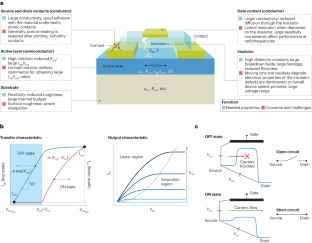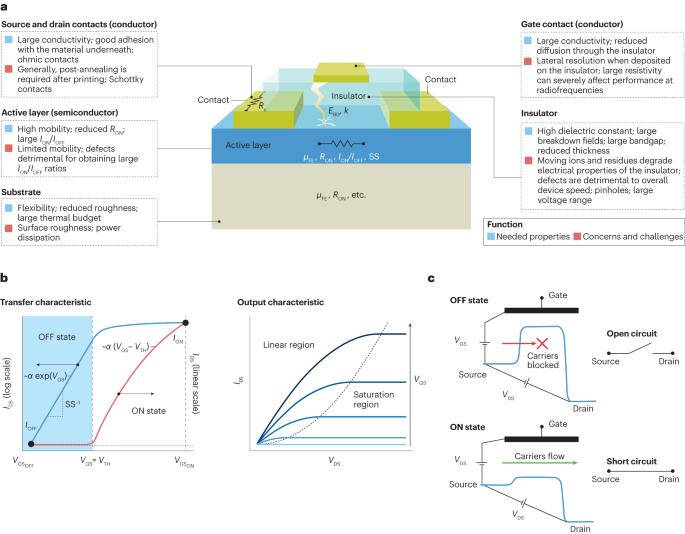Printed transistors made of 2D material-based inks
IF 79.8
1区 材料科学
Q1 MATERIALS SCIENCE, MULTIDISCIPLINARY
引用次数: 0
Abstract
Large-area electronics for the Internet of Things requires a new generation of light-weight, flexible, low-power electronics, based on advanced materials able to provide high-throughput fabrication of reliable, stable and cost-effective field-effect transistors that can be easily integrated onto flexible substrates such as plastic, paper and textiles. The family of 2D materials comprises a range of crystals with different chemical composition, structures and electronic properties that can be used as building blocks in transistors. Solution processing of 2D materials does not require the use of glove boxes, can be performed with minimal chemical processing and enables the use of printing technologies for device fabrication — these factors represent a critical advantage over traditional high-performance materials in terms of ease of processing, compatibility with flexible substrates, fabrication costs, large-volume manufacturing and scalability. Nevertheless, the electronic quality of solution-processed 2D materials is a bottleneck for the development of next-generation printed and flexible devices. This Review surveys solution-processed 2D material-based transistors, discussing the figures of merit, state of art and performance limits of devices, and describes the open challenges and future perspectives of this field. Two-dimensional materials can enable a new generation of flexible and printed electronics suitable for light-weight, low-power, sustainable and cost-effective field-effect transistors. This Review surveys solution-processed transistors based on 2D materials, discussing their performance, limitations and future perspectives.


由2D材料基油墨制成的印刷晶体管
用于物联网的大面积电子器件需要新一代轻质、柔性、低功耗的电子器件,其基础是能够高通量制造可靠、稳定和具有成本效益的场效应晶体管的先进材料,这些晶体管可以轻松集成到塑料、纸张和纺织品等柔性基底上。二维材料系列包括一系列具有不同化学成分、结构和电子特性的晶体,可用作晶体管的构件。二维材料的溶液加工不需要使用手套箱,只需进行最少的化学处理,并可使用印刷技术制造器件--这些因素与传统的高性能材料相比,在加工简便性、与柔性基底的兼容性、制造成本、大批量制造和可扩展性等方面具有至关重要的优势。然而,溶液加工二维材料的电子质量是开发新一代印刷和柔性器件的瓶颈。本综述探讨了基于溶液加工二维材料的晶体管,讨论了器件的优点、技术水平和性能极限,并描述了这一领域面临的挑战和未来前景。二维材料可以催生新一代柔性和印刷电子产品,适用于轻质、低功耗、可持续和具有成本效益的场效应晶体管。本综述探讨了基于二维材料的溶液加工晶体管,讨论了它们的性能、局限性和未来前景。
本文章由计算机程序翻译,如有差异,请以英文原文为准。
求助全文
约1分钟内获得全文
求助全文
来源期刊

Nature Reviews Materials
Materials Science-Biomaterials
CiteScore
119.40
自引率
0.40%
发文量
107
期刊介绍:
Nature Reviews Materials is an online-only journal that is published weekly. It covers a wide range of scientific disciplines within materials science. The journal includes Reviews, Perspectives, and Comments.
Nature Reviews Materials focuses on various aspects of materials science, including the making, measuring, modelling, and manufacturing of materials. It examines the entire process of materials science, from laboratory discovery to the development of functional devices.
 求助内容:
求助内容: 应助结果提醒方式:
应助结果提醒方式:


